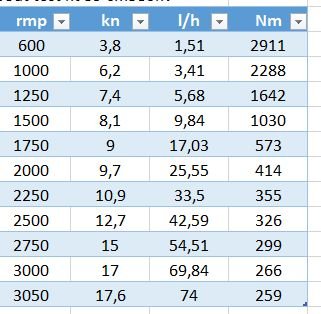Hi Seevee,
No, I am not thinking about airplanes at all -- that would be dumb.
Hydrodynamics and aerodynamics are two utterly different things. While they both deal with fluid dynamics, air is a compressible 'fluid' and water is not. Airplane propellers can be 'feathered', OP's props cannot. Airplanes have many control surfaces that can be used to compensate for asymmetrical thrust, OP's boat has rudders only.
Bringing airplanes into discussions about boats only creates confusion.
Some additional facts:
The rudder deflection required is primarily a function of (a) how far apart are the engines and (b) how much 'rudder' is being provided by the keel. With one prop pushing and one prop dragging, the thrust vector will far off the centerline. Twin-screw boat owners who 'drive with the sticks' already know how fast their boats will turn when you put one engine in neutral. Now...while your MS400 has a pretty decent keel (like my 390), in the Mainship 430, the keel is much smaller and almost insignificant.
Re:
"I could argue that your facts are a bit exaggerated."
I'd be happy to hear your argument, but I'll bet it comes from a near-universal misconception that goes like this:
"My engine's documentation (propeller demand curve) tells me I am burning 6gph (per engine) at 1,400 rpm. At these RPMs I am going 10mph. When I shut off one engine, I stay at 1,400rpm but my speed only drops from 10mph to 8mph. So, on two engines...10mph @ 12gph = 0.83mpg. On one engine I have 8mph @ 6gph = 1.33mpg. See how much fuel I can save!!"
Every argument I have ever seen for running a twin-screw boat on one engine goes like that. I have seen it over and over again, even here on Trawlerforum. It's totally bogus, but it STILL gets debated over and over again!
The problems with this argument? (a) as soon as you shut off one engine, the gph numbers from your engine demand curve go straight out the window. The engine is still turning 1,400 rpm, but it is now producing roughly 1.8x more horsepower, and BURNING 1.8x MORE FUEL. (b) You are now running GROSSLY overpropped! In a twin-engine boat, the engines are matched to propellers based on a load curve that assumes each engine is doing half the work.
For some reason, people just don't get it that diesel engine fuel consumption is NOT a function of RPM.
Rather, it is a function of how much horsepower the engine is making.
While marine diesel engine experts will acknowledge the above as totally obvious, it seems to escape most diesel-powered boat owners.
Fortunately there is a very easy way to confirm the truth of this. At cruise speed, try shutting down one engine while maintaining RPMs and monitoring your EGT. EGT increases with the horsepower produced and fuel burned.
You will see EGT spike up sharply. Now...try to increase RPMs on one engine to get back up to your original speed, while watching your EGT. EGT will
skyrocket and you will probably now be seeing black smoke. Of course this is because you are now overloading an engine that is now also grossly overpropped.
In addition to our MS390 (single Yanmar), I also own a Bayliner 4788 with twin Cummins 370's. On a recent 1,000 mile trip, one of the transmissions started to sound funny, so I shut down that engine for about three hours until I could make port. Now...the displacement and the keel configuration of my 4788 and the MS430 are very similar. I needed
more than 10 degrees rudder to keep the boat running straight, and I could not go faster than about 6.5 mph without pushing my EGT to it's limits. At 8.5mph on one engine EGT briefly went above 750 degrees. Normal EGT at that speed running on two engines is well under 500 degrees.
In addition to the fact that running on one engine will not save any fuel, I would also consider it 'engine abuse'.

